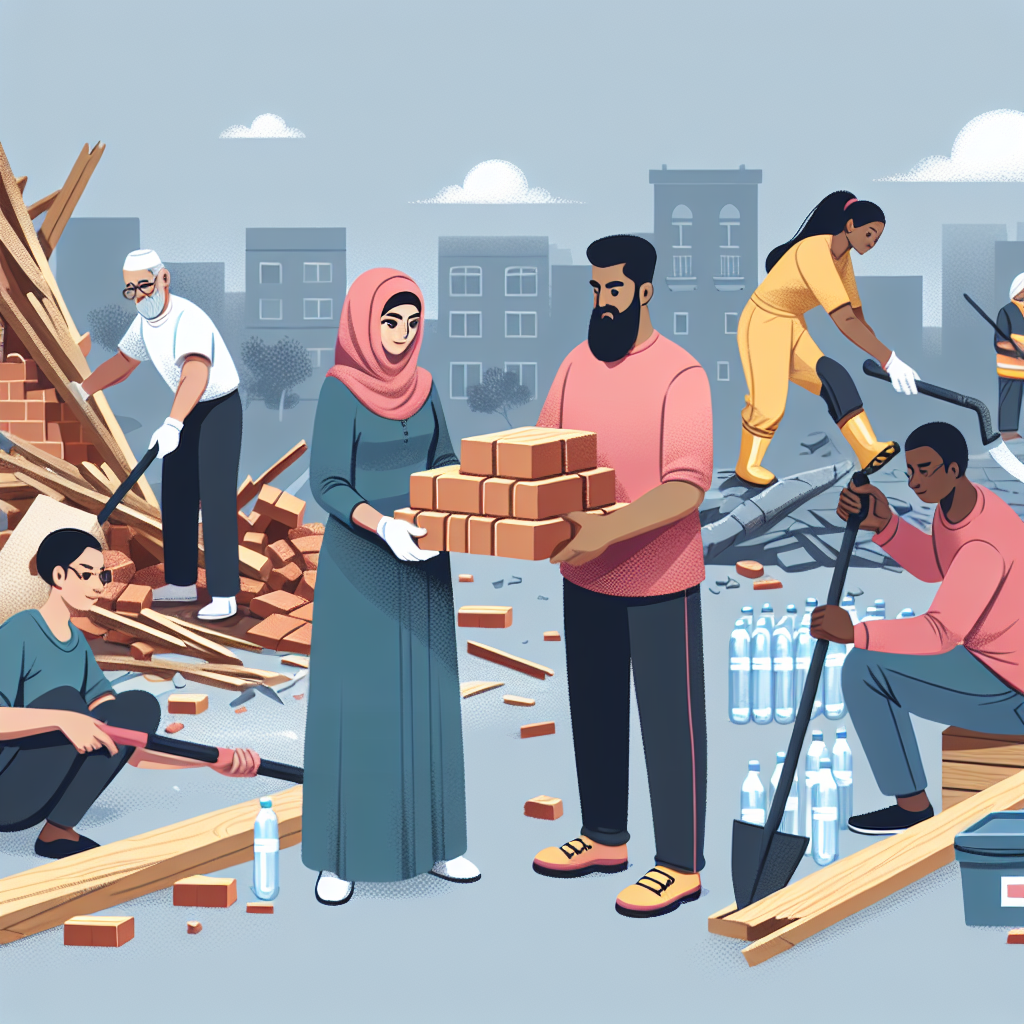Volunteering for Disaster Relief: Helping Communities Rebuild and Recover
When disaster strikes, the immediate aftermath can be chaotic and heart-wrenching. From hurricanes to wildfires, and earthquakes to floods, natural calamities can turn lives upside down in an instant. However, the silver lining in these dark clouds is the way communities and volunteers come together to help rebuild and recover. Volunteering for disaster relief plays an essential role in strengthening communities during their time of need.
The Importance of Volunteering in Disaster Relief
Disaster relief volunteering is more than just offering a helping hand. It’s about reinvigorating hope, providing vital support, and helping affected communities regain a sense of normalcy. Volunteers are often the unsung heroes who provide necessary aid, rebuild infrastructure, and offer emotional support to those who have lost everything.
Ways You Can Volunteer
Volunteering for disaster relief can take many forms, catering to various skills and interests. Here are some ways you can get involved:
- Emergency Response Teams: Join teams that provide immediate assistance such as medical aid, search and rescue, and basic needs distribution.
- Construction and Rebuilding: Help in rebuilding homes, schools, and other infrastructure damaged by the disaster.
- Fundraising and Resource Collection: Assist in organizing fundraising events or collecting essential supplies for the affected individuals.
- Administrative Support: Offer your administrative skills by helping with paperwork, coordination, and management tasks.
- Emotional and Psychological Support: Provide counseling and emotional support to help victims cope with the trauma.
How to Prepare for Volunteering
Before diving into disaster relief volunteering, it’s crucial to be prepared both mentally and physically. Here’s a handy checklist to ensure you’re ready for the task:
- Research: Learn about the disaster-affected area and understand the needs of the community.
- Training: Take relevant training courses, such as first aid or construction skills, to be more effective on the ground.
- Packing: Pack essentials like sturdy clothing, protective gear, and personal hygiene items.
- Health: Get necessary vaccinations and ensure you’re in good health to handle physically demanding tasks.
- Mindset: Be prepared for emotionally challenging situations and know when to seek support if needed.
Impact of Volunteering on the Community
The impact of volunteering extends beyond just physical assistance. It fosters a sense of solidarity, trust, and hope within the affected community. Volunteers help restore not just buildings, but lives and dreams. The presence of empathetic individuals willing to help makes a significant difference in the healing process.
For example, in the aftermath of the 2010 Haiti earthquake, thousands of volunteers from around the world contributed to relief efforts. This not only expedited the rebuilding process but also provided emotional support and hope to the millions affected by the tragedy.
Volunteer Stories: Real-life Heroes
Every volunteer has a story that highlights the profound impact of their efforts. Take the case of Laura, a nurse who traveled to Puerto Rico after Hurricane Maria. With limited resources, she and her team provided medical assistance to hundreds of families, and her dedication was a beacon of hope during dark times. Stories like Laura’s inspire others to step up and make a difference.
Get Involved: Your Turn to Make a Difference
The beauty of disaster relief volunteering is that anyone can contribute. Whether it’s donating time, money, or skills, every bit helps. Organizations such as the Red Cross, Habitat for Humanity, and local community groups offer numerous opportunities to get involved.
If you’ve ever felt a calling to help others during their toughest times, now is the time to act. Volunteering for disaster relief is a profoundly rewarding experience that not only aids in rebuilding communities but also enriches your own life.
Remember, recovery and rebuilding are long-term processes, and your support is invaluable every step of the way. So, roll up your sleeves, pack your gear, and get ready to be a force for good in the world.
Conclusion
Volunteering for disaster relief is more than just a noble cause; it’s a lifeline for those who have lost everything. By stepping up and offering your time, skills, and compassion, you play an essential role in helping communities rebuild and recover. Together, we can turn the tide and bring hope and healing to those in need.
So, are you ready to make a difference? The world needs more heroes like you!

